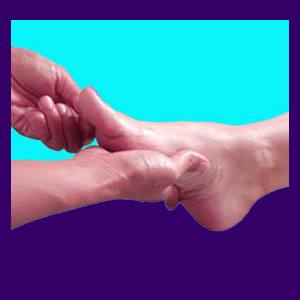
A numb foot is one of the most common associated symptoms of lower back pain and sciatica. Numbness in the foot, leg, buttocks or back can be an indicator of foraminal stenosis, also called a pinched nerve. However, in some cases, this diagnosis turns out to be mistaken, since many suspected sources of compressive neuropathies do not actually influence the nerve structure at all. Most of these merely involve a decrease in the size of the foraminal space, but no true compression of the nerve root. In other patients, structural issues, such as central spinal stenosis may be the culprit of numbness, as may non-spinal sources, such as regional ischemia.
Let’s spend this essay exploring the causes of numbness in the feet and how they might relate to a spinal source.
Numb Feet Diagnosis
When a nerve root in the lumbar spine is implicated as the cause of numbness, the expected symptomology is clear. Clinical research has clearly shown that true pinched nerves will fail to signal, producing complete and objective numbness. This can certainly occur in some patients, but usually responds well to pinched nerve treatments. It makes sense, since in a structural compression scenario, if you remove the offending pressure on the nerve, the condition should resolve. However, many diagnosed nerve compression issues are clearly mistakenly identified, since the numbness is subjective, and accompanied by pain, or the symptomatic area does not correlate to the clinical expectation.
Furthermore, in many of these cases, even when the structural abnormality is corrected in the spine, the symptoms continue or change to a nearby location.
Numb Foot Factsheet
Numbness in the foot can be a sign of circulatory concerns, diabetes or other serious health condition. Always see your doctor to rule out any of these structural or disease processes as being responsible for your pain and numbness.
It is typical for a herniated disc or spinal osteophyte complex to be blamed for enacting a pinched nerve, yet the symptoms may be far too widespread and diverse to be logically explained by the suspected causation. This does not stop this diagnosis from being made untold millions of times a year and enslaving patients into inappropriate and unnecessary treatment regimens at the hands of clueless and/or greedy care providers.
Some poor souls are even tortured with needless back surgery, which of course will fail miserably if it is not directed at the actual source of symptoms. This is why patients are advised to seek correlation of any diagnosis with at least one objective neurologist and getting a second opinion is never a bad idea.
Numb Foot in Relation to Back Pain
Once all injuries and disease processes have been ruled out as the source of foot numbness, you need to really learn the facts about your diagnosis, especially if it indeed relates to a known spinal abnormality. Do not be led blindly into some illogical and nonsensical therapy program to treat a condition which is not even responsible for your symptoms. It may sound silly, but it happens to so many of you day after day. It happened to me for 18 long years. If numbness does not respond to treatment and continues a subjective and variable pattern, a logical explanation to consider is simple oxygen deprivation.
For patients who do demonstrate verified structural pain scenarios, you still have lots to consider when it comes to treatment. It is not a good idea to simply acquiesce to surgery without considering other less risky options which might be available to you, including spinal decompression. Some patients may experience relief using purely conservative methods of care or even from the passage of time alone.




